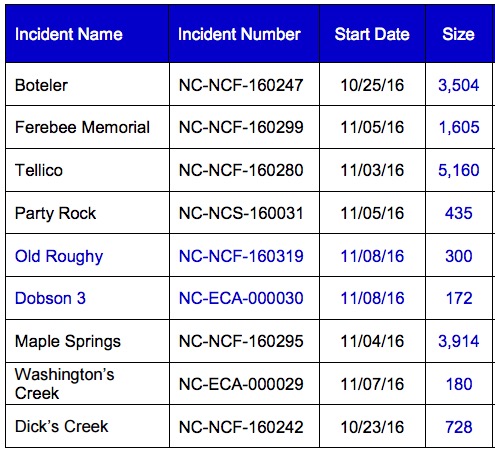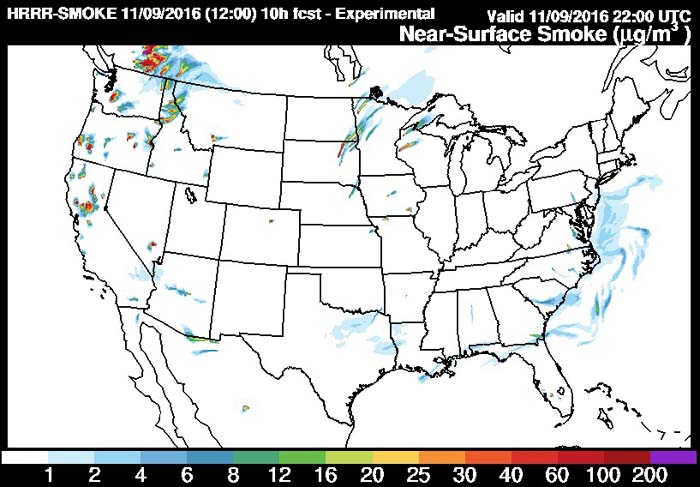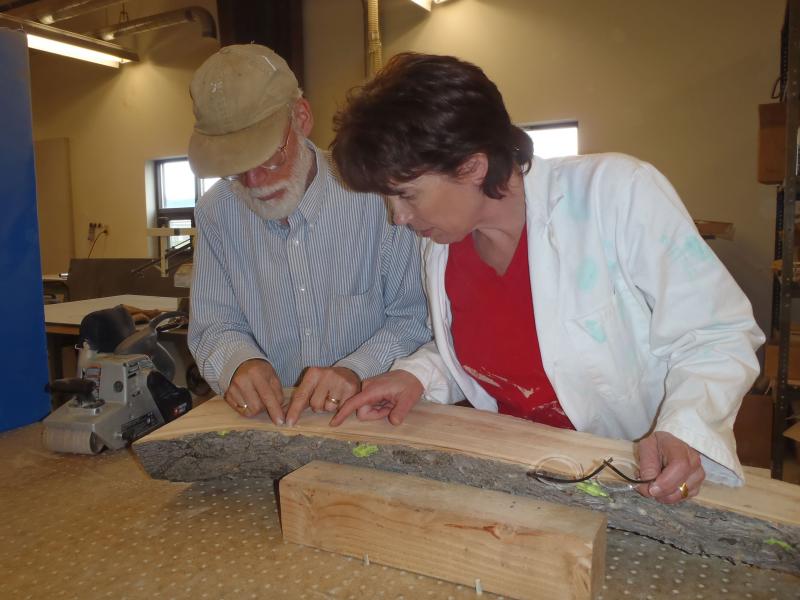Above: Satellite photo showing smoke from wildfires in North Carolina, South Carolina, Tennessee, and Georgia, November 10, 2016.
Many wildfires are still burning in North Carolina, South Carolina, Georgia, Tennessee, and several other states in the southeastern United States. On Thursday much of the smoke was being blown into the northern half of Georgia, potentially causing health problems for sensitive people.

The primary culprit for the wildfire activity is a lack of precipitation. Many areas in the southeast have not received any significant rain in weeks. It has been more than 70 days for some locations in Kentucky, Tennessee, North Carolina, Georgia, Mississippi, Alabama, and South Carolina. This has resulted in many wildfires breaking out in the last month.

The state with the most active fires is North Carolina, but the largest fire currently burning in the south is in Georgia, the 10,336-acre Rough Ridge Fire in the northern part of the state. Caused by lightning on October 16, it is being fought by 296 personnel, 9 hand crews, 2 helicopters, 7 engines, and 2 dozers.











